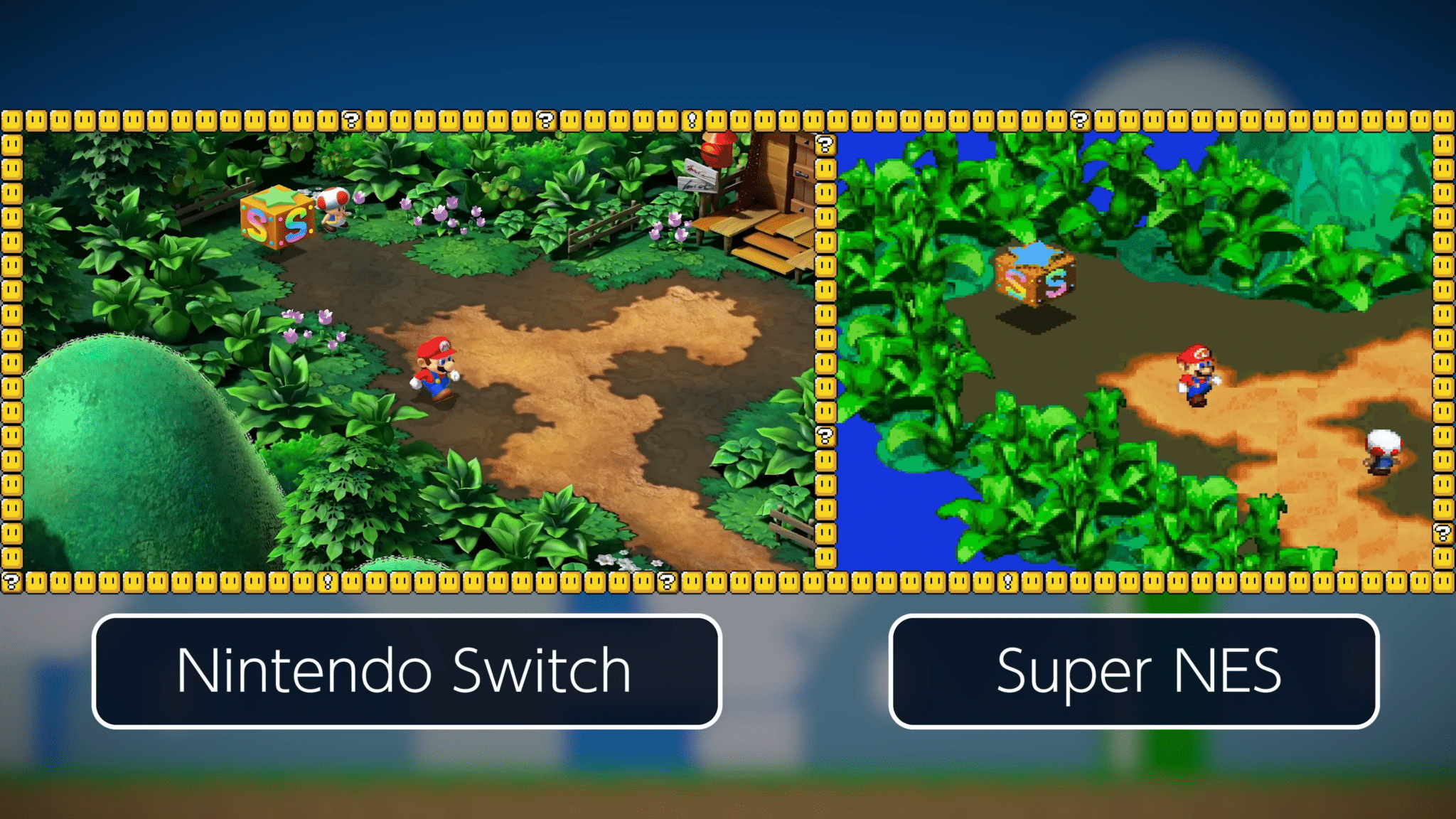
Summary:
We delve into the technical marvel that is the Super Mario RPG remake on the Nintendo Switch. Digital Foundry‘s gaming tech team explores the game’s transition to the Unity Engine, its stunning visual enhancements, and the impact on animations. We also scrutinize the game’s framerate performance, highlighting the moments when it stumbles and analyzing the implications for gameplay. Join us as we uncover the highs and lows of this highly-anticipated remake and examine how it measures up to the SNES original.
The Super Mario RPG Remake – Performance and Graphics
The gaming world has been buzzing with excitement as Nintendo brings back a classic in a new avatar – Super Mario RPG, remade exclusively for the Nintendo Switch. But does this remake live up to the nostalgia and expectations of fans, especially when it comes to its technical aspects? Digital Foundry’s gaming tech team has been hard at work, and in this analysis, we’ll take a deep dive into the technical aspects of the Super Mario RPG remake.
Background on the Remake
The journey begins with a brief exploration of the history and significance of Super Mario RPG. Originally released on the Super Nintendo Entertainment System (SNES) in 1996, the game received critical acclaim for its unique blend of role-playing and platforming elements. Fast forward to 2023, and we have a remake on the Nintendo Switch, promising to capture the magic of the original.
Use of Unity Engine
One of the standout features of this remake is its use of the Unity Engine. This modern engine has allowed the developers to recreate the entire game world in real-time 3D while staying faithful to the original. Even the SNES original’s attract mode gets a shot-for-shot remake. This move to Unity is a significant departure from the original’s sprite-based graphics and adds a layer of complexity to the game’s technical performance.

Video credits: Digital Foundry
Visual Enhancements
The transition to real-time 3D rendering has brought about a significant enhancement in visual fidelity. The game now runs natively at 720p in handheld mode and 1080p when docked. This is a welcome improvement, making the world of Super Mario RPG more immersive and visually appealing than ever before.
Comparison with the SNES Original
One of the remarkable aspects of this remake is its dedication to faithfully recreating the world of the SNES original. Players can expect to see familiar locations and characters but rendered in stunning 3D. It’s as if you’ve stepped into the original game with a fresh perspective, and this attention to detail has garnered praise from fans and critics alike.
Animation and Graphics
In the remake, all animations are displayed at the full frame rate, utilizing 3D models that update at the same rate as the frame rate. This shift from sprite-based animations to 3D models is a significant departure from the original, and it has raised questions about the impact on the intensity of each movement.
Impact on Animations
Despite the change in animation style, the impact of this transition is retained, offering smoother and more powerful animations. The move to 3D models has allowed for greater detail and fluidity in character movements, adding a layer of depth to the gameplay experience.
Framerate Analysis
Super Mario RPG aims to maintain a consistent 60 frames per second (fps) for a smooth and fluid gaming experience. In most cases, it succeeds admirably, delivering on its promise of high-performance gameplay.
Smooth Experience vs. Frame Drops
However, no game is without its challenges, and this remake is no exception. While it generally maintains its target frame rate, there are instances where the game stumbles, resulting in frame drops. These drops can be jarring and impact the overall experience. The stability of the frame rate is crucial in a game like Super Mario RPG, where precise timing and control are essential.
Performance Challenges
Let’s address the elephant in the room – the performance challenges in Super Mario RPG. While the game strives for a consistent 60fps, there are moments when it falls short. These instances of frame drops can be frustrating, particularly during intense gameplay sequences.
Frame-Time Instability
What’s even more concerning is the unpredictability of frame times during these drops. Frame-time instability can lead to a jerky and disjointed visual experience, which is far from ideal for a game of this caliber. The impact of these performance issues is most noticeable during transitions between smooth gameplay and sudden frame drops. These transitions can be jarring and disrupt the immersive experience that the game otherwise excels in delivering.
Conclusion:
In conclusion, the Super Mario RPG remake on the Nintendo Switch is a technical marvel that successfully brings a beloved classic into the modern era. The use of the Unity Engine and the transition to 3D graphics have enhanced the game’s visual appeal and fidelity. However, it’s not without its performance challenges, as frame drops and frame-time instability can disrupt an otherwise smooth gaming experience. Fans of the original will likely find much to love in this remake, but it’s essential to be aware of its technical limitations.
FAQs
- 1. Is the Super Mario RPG remake faithful to the original game?
- Yes, the remake remains remarkably faithful to the original SNES game, even recreating shot-for-shot moments from the attract mode.
- 2. How does the transition to 3D graphics impact the gameplay experience?
- The transition enhances animations and adds depth to character movements, providing a more immersive experience.
- 3. Does the game consistently run at 60fps?
- While the game generally targets 60fps, there are instances of frame drops, affecting the overall performance.
- 4. Are the frame drops significant enough to impact gameplay?
- Yes, frame drops can be noticeable and may disrupt gameplay, particularly during intense moments.
- 5. How do the frame-time instabilities affect the game’s visual experience?
- Frame-time instabilities can lead to jerky transitions between smooth gameplay and drops in frame rate, impacting the visual experience.













